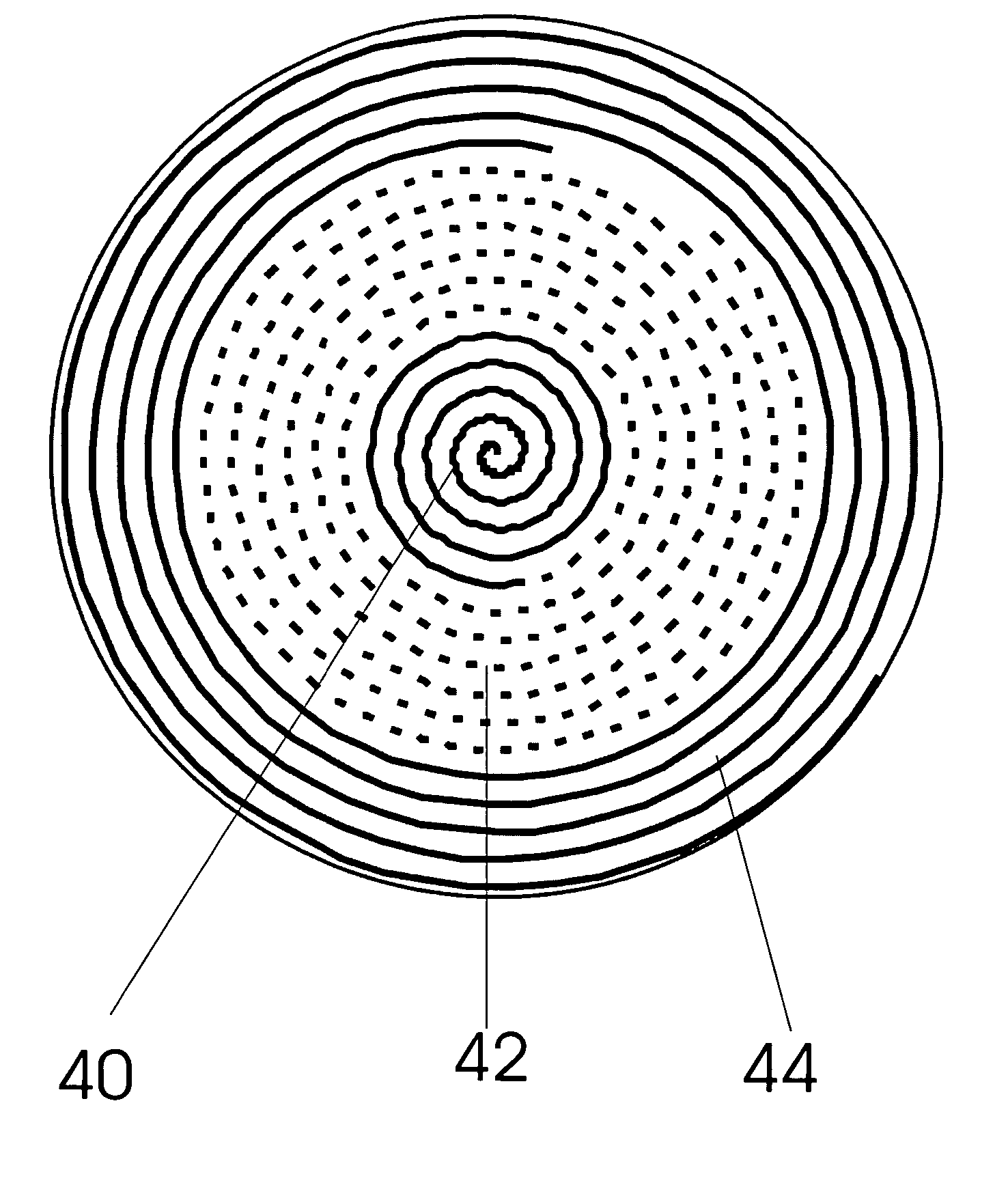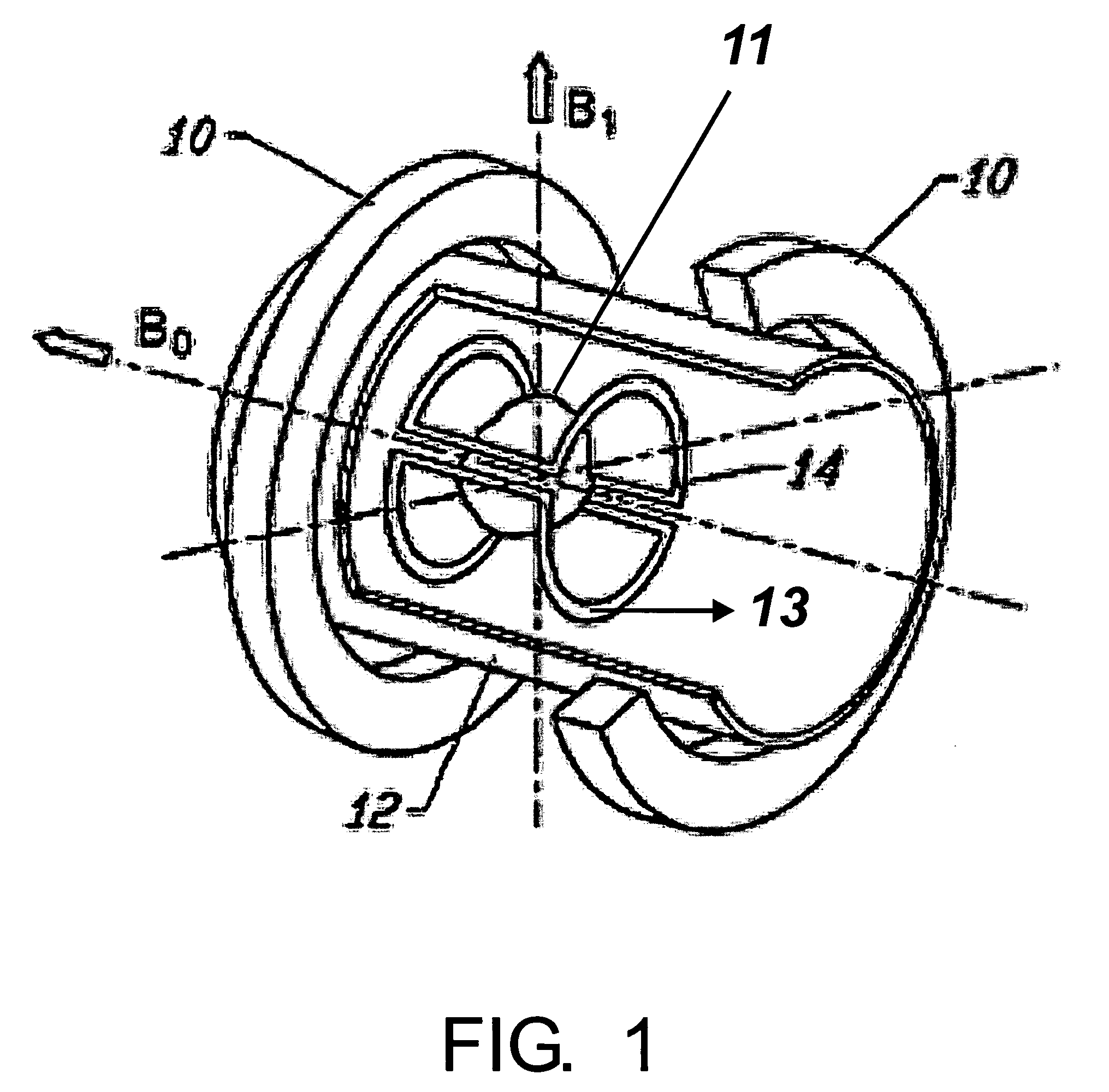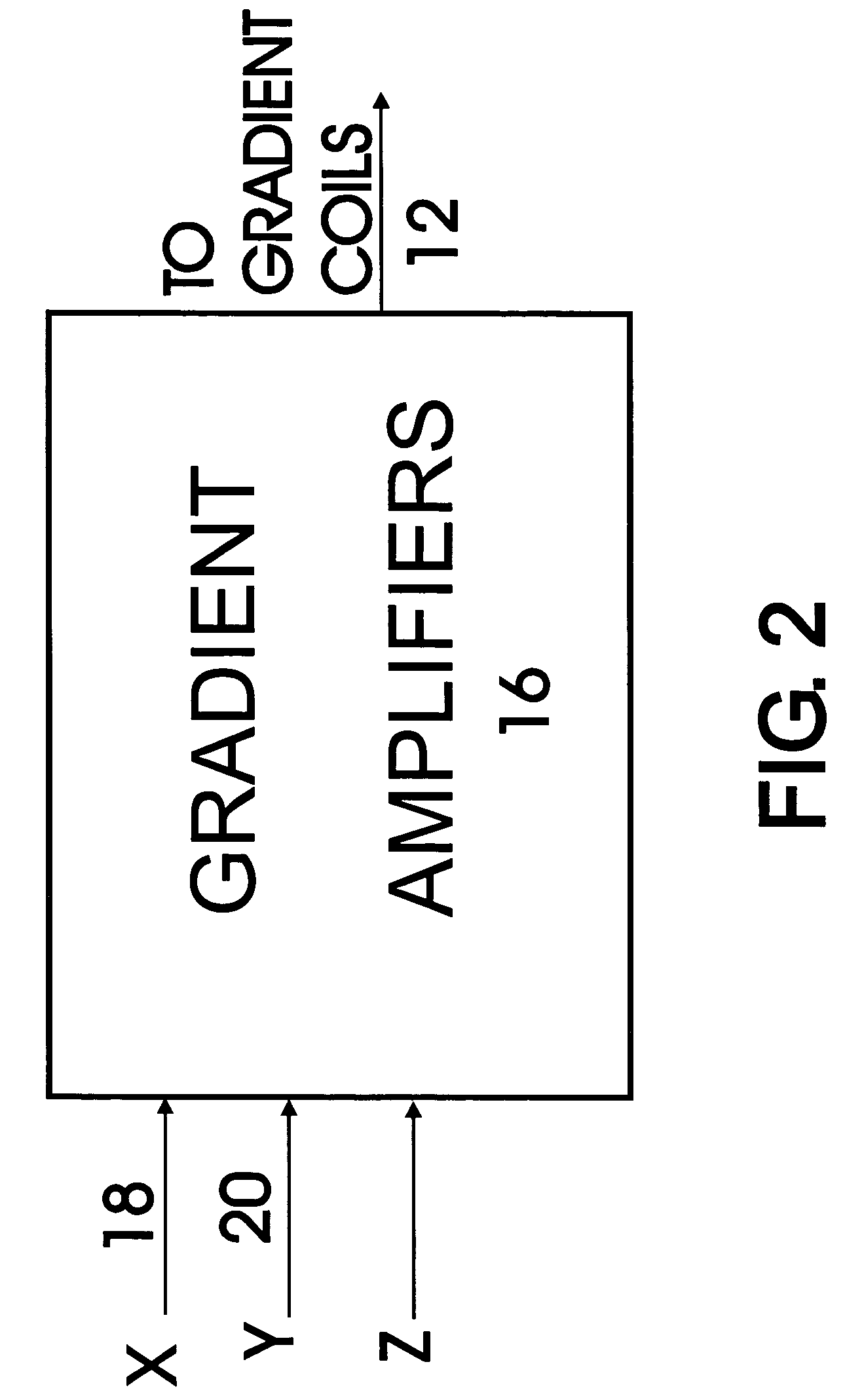Magnetic resonance imaging using demodulated k-space segments
a magnetic resonance imaging and demodulation technology, applied in the field of magnetic resonance imaging systems, can solve the problems of neural stimulation, poor snr, and exceeding the fda db/dt limi
- Summary
- Abstract
- Description
- Claims
- Application Information
AI Technical Summary
Benefits of technology
Problems solved by technology
Method used
Image
Examples
Embodiment Construction
[0023]An understanding of the broad aspects of the invention can best be had by reference to FIG. 1. Here we basically see the structures of an MRI system as described in the book by P. Mansfield and P. G. Morris in “NMR Imaging in Biomedicine”, Academic Press, Inc., Orlando Fla., 1982. Here it is used to image object 11 that is normally a portion of the human body. The magnetic moments in the body are polarized using solenoidal magnet 10. A set of gradient coils on cylinder 12 provide fields pointed in the same direction as the B0 field created by magnet 10. These are made spatially varying to provide imaging information while the magnetic moments are precessing. Using these coils, variations can be made in the x, y, or z axes representing the three gradient fields, all pointing in the B0 direction. These provide gradient fields as given by:
Gx=d / dx B0
Gy=d / dy B0
Gz=d / dz B0.
These gradient fields are used, while the moments are precessing, to create linear space-varying fields to provi...
PUM
 Login to View More
Login to View More Abstract
Description
Claims
Application Information
 Login to View More
Login to View More - R&D
- Intellectual Property
- Life Sciences
- Materials
- Tech Scout
- Unparalleled Data Quality
- Higher Quality Content
- 60% Fewer Hallucinations
Browse by: Latest US Patents, China's latest patents, Technical Efficacy Thesaurus, Application Domain, Technology Topic, Popular Technical Reports.
© 2025 PatSnap. All rights reserved.Legal|Privacy policy|Modern Slavery Act Transparency Statement|Sitemap|About US| Contact US: help@patsnap.com



